- Accommodations
- Destination
- Family friendly
- Glimpse of Tours
- Meals Included
- National Park
- Nepal
- Seasonal Offer
- Transportation included
- Walking
Yoga & Meditation Camp
Yoga is a physical, mental, and spiritual practice or discipline. There is a broad variety of Yoga schools, practices, and goals in Hinduism, Buddhism, and Jainism. Among the most well-known types of yoga are Hatha yoga and Raja yoga.
The origins of yoga have been speculated to date back to pre-Vedic Indian traditions, it is mentioned in the Rigveda, but most likely developed around the sixth and fifth centuries BCE, in ancient India’s ascetic and śramaṇa movements. The chronology of earliest texts describing yoga-practices is unclear, varyingly credited to Hindu Upanishads and Buddhist Pāli Canon, probably of third century BCE or later. The Yoga Sutras of Patanjali date from the first half of the 1st millennium CE, but only gained prominence in the West in the 20th century. Hatha yoga texts emerged around the 11th century with origins in tantra.
Yoga gurus from India later introduced yoga to the west, following the success of Swami Vivekananda in the late 19th and early 20th century. In the 1980s, yoga became popular as a system of physical exercise across the Western world. Yoga in Indian traditions, however, is more than physical exercise, it has a meditative and spiritual core. One of the six major orthodox schools of Hinduism is also called Yoga, which has its own epistemology and metaphysics, and is closely related to Hindu Samkhya philosophy.
Many studies have tried to determine the effectiveness of yoga as a complementary intervention for cancer, schizophrenia, asthma, and heart disease. The results of these studies have been mixed and inconclusive, with cancer studies suggesting none to unclear effectiveness, and others suggesting yoga may reduce risk factors and aid in a patient’s psychological healing process.
Kathmandu
Kathmandu is the capital of the Kingdom of Nepal. The city is at 1336 m above sea level. The valley covers an area of 218 square miles. It is surrounded by a tier of green mountain wall above, which tower mighty snow – capped peaks. The Kathmandu valley hosts three districts, Bhaktapur, Lalitpur (Patan) and Kathmandu, famous for their historic, artistic and cultural aspects. These three districts were part of different empires in the period of the Mallas (1200AD), great rulers of the area. The Kathmandu valley hosts seven World Heritage Sites declared by the UNESCO in Nepal. The valley is famous for the scenery, beautiful countryside, ethnic clans, monasteries and thousands of temples. The city is also called the city of temples.
Bandipur
Midway on the Prithivi Highway between the capital Kathmandu and the resort town of Pokhara lies Bandipur, a picturesque Newar town that still retains much of its centuries-old appeal.
Bandipur bazaar is situated on a ridge above the highway town of Dumre, and presents sightseers with a heady mix of history, architecture, incredible views, awesome caves and unspoiled landscapes. Located at an altitude of 1,030 m, Bandipur has been described as a natural view tower, providing a spectacular panorama of the entire Annapurna Range plus the peaks of Dhaulagiri, Manaslu and Langtang to the Marsyangdi valley which is below 500m. Apart from the stunning views of the Himalaya and the Marsyangdi Valley, a visit to the town is an opportunity to get a close look at Newar cultural life that reflects the refined civilization of the Kathmandu Valley. Bandipur is also a great place for adventure sports like paragliding, caving, rock climbing, rafting and hiking.
Pokhara
Pokhara is a remarkable place of Natural Beauty. Situated at an altitude of 827m from the sea level and 200km west of Kathmandu (Capital of Nepal) valley, the city is known as a center of adventure. This enchanting city has several beautiful lakes and offers stunning panoramic views of Himalayan peaks. The serenity of lakes and the magnificence of the Himalayas rising behind them create an ambience of peace and magic. So today the city has not only become the starting point for most popular trekking and rafting destinations but also a place to relax and enjoy the beauty of nature.
Pokhara is part of a once vibrant trade route extending between India and Tibet. To this day, mule trains can be seen camped on the outskirts of the town, bringing goods to trade from remote regions of the Himalaya. This is the land of Gurungs and Magars, hardworking farmers and valorous warriors who have earned worldwide fame as Gurkha soldiers. The Brahmans, Chhetries, Newars, Thakalis are another important ethnic group here, are known for their entrepreneurship.
Fewa Lake, Begnas Lake, Rupa Lake, Barahi temple, World Peace Pagoda, Seti, Gandaki, Devi’s Fall, Gupteswar Gupha (cave), Mahendra Gupha (cave), Chamero Gupha (Bats Cave), Old Bazaar, Bindbabasini Temple, Matepani Gumba (Buddhist Monastery) Bhadrakali Mandir (Temple), Regional Museum, International Mountain Museum, Gorkha Memorial Museum, Annapurna Museum, Himalayan View, Nightlife and Entertainment around Pokhara.
Chitwan
Chitwan National Park is located in south central Nepal in the sub-tropical lowlands of the inner Terai of Chitwan, Makawanpur, Parsa and Nawalparasi districts. It lies between 27°16.56’- 27°42.14’ Latitudes and 83°50.23’-84°46.25’ Longitudes. The altitude ranges from 110m to 850m above sea level. The park is bounded by the Rapti and Narayani River in the north, Parsa Wildlife Reserve in the east, and Madi settlements and India border in the south. The physiography of the park consists of the Terai and Swales. Three major rivers Narayani, Rapti and Rue, and their floodplains, and several lakes and pools are the major water sources of the park.
Being the first protected area of Nepal, it has a long history with more than three decades in park management and rich experiences in nature conservation. Prior to its declaration as a National Park, Chitwan was a big game area for the royal families, Rana rulers and their guests. The area comprising the Tikauli forest from Rapti River to the foothills of the Mahabharat extending over an area of 175 km2 was declared as Mahendra Deer Park in 1959. The area south of the Rapti River was demarcated as a Rhino Sanctuary in 1963. It was proclaimed as Royal Chitwan National Park with an area of 932 km2 in 1973. After the peoples’ revolution in 2006, the park’s name was changed to Chitwan National Park.
Gorkha
25 kilometer road off the main highway connecting Pokhara and Kathmandu brings you to an ancient Gorkha- the untouched and captivating town of Nepal! Some 300 years ago, Nepal was divided into 50 tiny states, and Gorkha was one of them. King Prithivi Narayan Shah, the founder of `Shah Dynasty’ unified Nepal into one kingdom.
His Gorkha palace resides on top of a hill at an altitude of 3281 feet (about 1000 meter) The King would watch-over his people as far as his eyes could see from the tallest palace in the very center of Nepal! Gorkha is also the home of Gurkhas – the legendary brave warriors who fought with knives against guns.
Take a look at the tours for more packages.
Additional information
| Physicality | 6/10 |
|---|---|
| Location | Nepal |



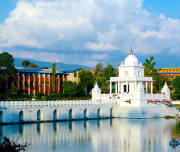
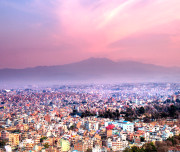


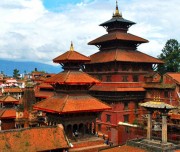
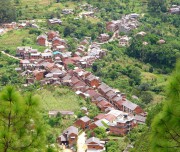
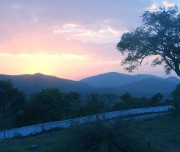
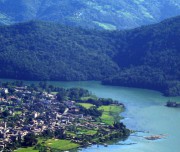
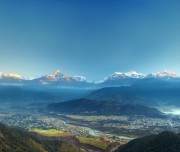

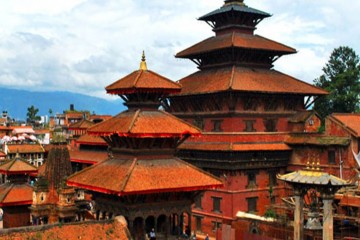

Tour Reviews
There are no reviews yet.
Leave a Review